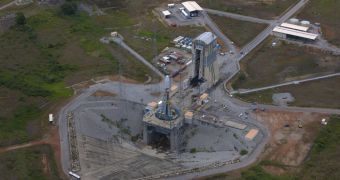Space analysts say that the European Space Agency (ESA) will not be able to launch astronauts to low-Earth orbit from its Kourou Spaceport, in French Guiana, South America, aboard Russian-built Soyuz space capsules. This impossibility stems from the facility's geographical location.
Over the past few years, ESA and the Russian Federal Space Agency (RosCosmos) have been working together towards constructing a launch pad at Kourou that can accommodate Soyuz delivery systems.
The project was completed last year, and the first launch – a rocket carrying the first two spacecraft of the European Galileo satellite navigation system – has already taken place. Normally, minor changes brought to the ground-based infrastructure at the pad should have allowed for manned launches.
But this is very unlikely to be possible at Kourou, scientists say. Even ESA has been aware of this since 2004, yet it went on with its plans. The main issue here is that the Soyuz spacecraft was never designed to land on water.
Usually, the capsule lands in the steppes of Kazakhstan upon returning from space; always on solid ground. But the Kourou Spaceport is located very close to the Atlantic Ocean, and this has significant implications if ever a Soyuz launch has to be aborted.
The emergency escape mechanism would jettison the spacecraft from a failing rocket, but then the crew would run the risk of drowning, rather than returning home to safety. As a side note, the launch site does not provide direct access to the International Space Station (ISS).
In order for manned launches from Guiana to become a reality, the Soyuz TMA spacecraft – the type of capsule that the ESA launch pad can accommodate – would have to be extensively modified, especially in its lower half. But this would imply funding from RosCosmos be allotted for this purpose.
“The [Soyuz] re-entry capsule has not been designed to travelling on water and its evacuation following splash-down in the ocean in the event of an aborted launch may result in a particularly difficult experience for the crew,” reads a technical paper on the 2004 study, obtained by Space.
“Theoretically all is possible but manned flights from [French Guiana] would be a major endeavor, requiring huge investments,” ESA officials told the website in response. “In [the] case of sea landing [we would need] to verify whether the current capsule can be adapted,” they concluded.

 14 DAY TRIAL //
14 DAY TRIAL //